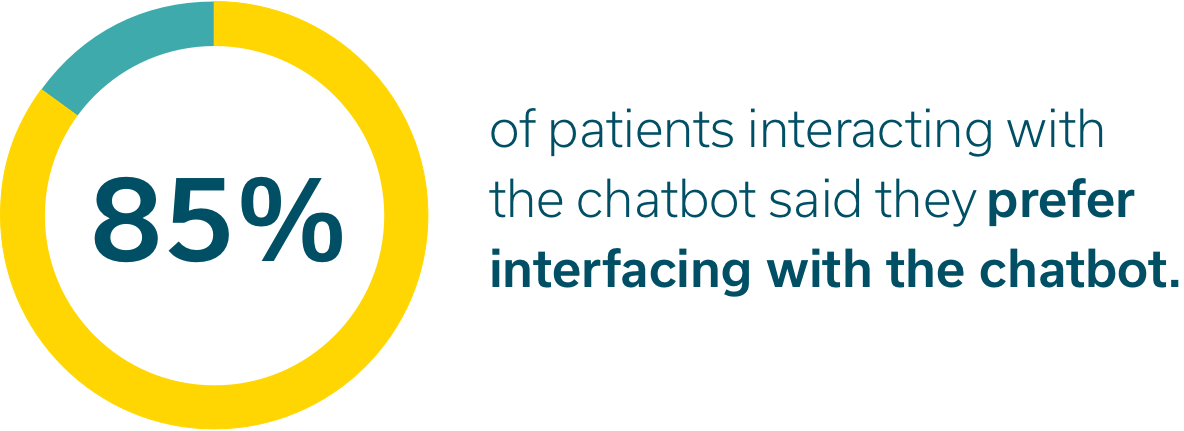To read or not to read…that is the question.
As a society, our attention span is shorter than ever. We get short news roundups on our phones every morning so we don’t have to spend time poring over the Wall Street Journal. We prefer to listen to chunks of podcasts or audiobooks over picking up a physical book. A record high 81% of Americans report never reading for pleasure; we spend 10 times more time on Netflix and watching TV than we do reading.
It isn’t just that we’re setting aside less time to read. 50% of US adultscannot read a book written at an 8th grade reading level.
So it seems counterintuitive when we look at healthcare and find that patients are still being handed lengthy documents for their post-discharge treatment plans. They might be clinically accurate, but they’re clunky, ineffective, and outdated. Most patients never get through them, preferring instead to call their doctor whenever they have a question or simply ignore their treatment plans. It’s no wonder, when they’re written like required reading for an upper level college class, while the target reading level for patient materials should be 6th grade.
Low Health Literacy is a Problem, It’s Time to Rethink
We might be able to live with people not reading Shakespeare in their free time, but we can’t afford to have patients not read their discharge plans. Low health literacy costs us between $100 and $200 billion a year and results in 16% more hospitalizations. Patients with low health literacy have 3 times as many prescriptions and are also 1.5 times more likely to visit a doctor. When the stakes are this high, we can’t throw patients into the deep end and expect them to understand what phrases like “oncology post-therapeutic monitoring” mean (hint: all it means is that a nurse will call the patient after discharge).
We need to rethink how we educate patients and give them the knowledge they need to manage their health effectively. Think DuoLingo, but for pre-op care plans. Or CliffNotes, but for lengthy discharge documents. We need to find cleaner, simpler ways to meet patients where they are, literacy-wise, to help them take control of their own health.
In an ideal world, each patient would leave the hospital with direct 24/7 hotline to their doctor. Patients could bother their doctor for every 3am question they might have, and get immediate, personalized answers they know they can trust. While this is cost prohibitive, that’s the level of contact and care we need to aim for. And while we might not be able to provide patients with their very own pocket doctors, we can leverage what is already in their pockets: their smartphones.
It’s no secret that we’re spending increasing amounts of time, both passive and active, on our smartphones. However, the solution isn’t to encourage patients to spend more time on the WebMD app. We can do better than that. Instead, we should leverage the power of mobile chatbots to digitize, automate, and streamline health conversations.
Imagine you’ve just been sent home after your hip replacement. You’re groggy, you’re in pain, and you’re relying on friends and family to bring you food. You have a question about how quickly the wound will close, and if you’ll have a scar. What would you prefer? Combing through a 20 page booklet, or a conversational digital assistant you can get an immediate answer from?
20 Page PDF vs. A Digital Assistant? The Consumer Survey Said…
To put conversational AI to the test, we surveyed 200 patients to determine whether chatbots are more effective and engaging than printed materials. The results were highly instructive and motivating. 20% of patients who were given the printed care plan booklet were unable to find the answer to a simple question within 10 minutes. We can’t expect a patient to dig through a 20 page document every time they have a question, and we also can’t have them calling their doctor’s office every time they can’t find the answer. The longer it takes for a patient to find the information they need, the more likely they are to give up, resulting in potentially disastrous health outcomes.
Meanwhile, patients interacting with the conversational chatbot demonstrated 30% better care plan comprehension for simple FAQs. 85% of patients interacting with the chatbot reported preferring interfacing with the chatbot and were 1.2x more likely to feel confident that they could find answers to future questions.

Improving care plan comprehension and meeting patients at the right health literacy levels isn’t an academic exercise — it’s a crucial building block to effective engagement. We can’t place the responsibility of comprehension on patients’ shoulders without giving them a chance to succeed. It’s time for hospitals and pharmaceutical companies to start employing smart, conversational tools that can walk patients through every step of their healthcare journey — every question, every fear, every triumph, at any time of day, in any language.








